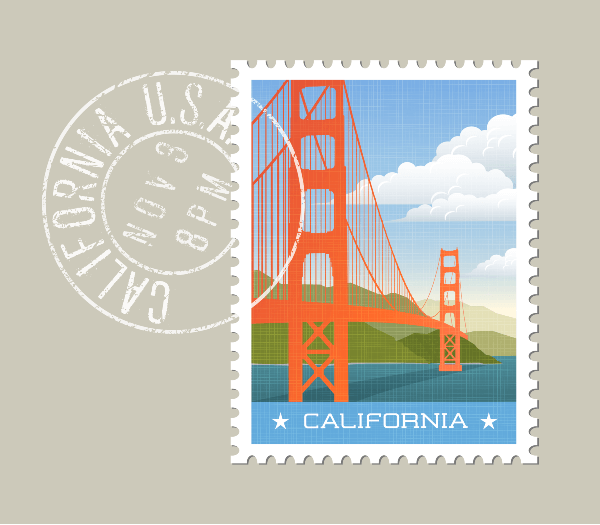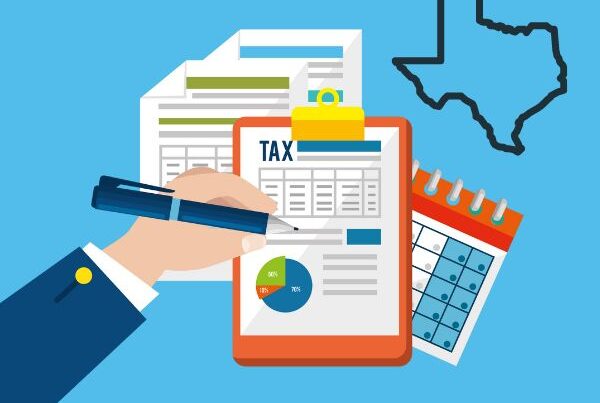
Estimated reading time: 7 1/2 minutes
What is the Deal with California Sales & Use Tax?
If we say the phrase “sales tax,” does your mind automatically go to a place of dread? Does your stomach clench and your head start spinning? Do you find yourself entering flight or fight mode?
Yeah, we totally get it. Sales tax is one of those business topics that gets folks in a tizzy. And for good reason. We’ve seen multiple businesses struggle, and even sink, because of mismanaging the ins and outs of sales tax. It’s definitely not for the faint of heart.
The good news is we work in the sales tax realm with our clients day-in and day-out. We’re here to help you navigate the basic process and share tips, tools, and one-on-one instruction so you can tackle sales tax with confidence.
Our topic today is one that actually comes up frequently. It’s how to navigate California online sales tax.
California has an incredibly large and complicated tax system. Given that it has one of the largest GDPs in the world (approximately $3 trillion in 2020 and ranking close to nations like Japan and Germany), it’s kinda no wonder it may feel like doing business with a foreign country when operating in California.
It’s common knowledge that there are a lot of sales tax laws and regulations to be compliant with. And just like doing international business, success is dependent on learning all of the variable factors that are unique to its economic system.
So, let’s breakdown California online sales tax into four basic areas that are important to understand. (You can also learn more in our video on this topic here):
Determine if Your Business Has Nexus in California
As you likely already know, the term nexus has to do with what states you should be collecting and remitting sales taxes in. There are multiple types of nexus, with the most common types being physical and economic.
Physical Nexus
Physical nexus may seem pretty straightforward–it’s where you have a physical business presence in a state (i.e., people and property). However, there are nuances that many business owners may not be aware of. Physical nexus goes beyond having office space or warehouses. It can also include places where remote employees work, equipment is leased or inventory is stored.
A good rule of thumb is to think about where you have PEOPLE and PROPERTY.
Economic Nexus
Economic nexus is tied to your sales activity. California, like most other states in the U.S., adopted the economic nexus ruling of South Dakota v. Wayfair 2018. The Wayfair ruling allows states to collect sales tax from online sales even when the business has no physical presence in that state.
In California, the economic nexus threshold is $500k or more in sales for the current or previous calendar year. This applies to all sales, so it even includes transactions like resales.
And remember, it includes ALL the sales from ALL of your sales channels. So, if you’re selling on Amazon and Shopify, even though Amazon is taking care of the sales tax there, you’re still responsible for filing California sales tax on your Shopify channel if you’ve passed the threshold in California.
We go into great detail about physical and economic nexus in our free guide 10 Steps to Ensure Sales Tax Doesn’t Burn Down Your eCommerce Business.
Determine if Your Products are Taxable or Tax-Exempt
If your business meets the definition of nexus, the next step will be to determine which products are taxable sales and which are tax exempt.
You’ll want to do this exercise before sitting down and registering with the state. There is information you need to gather for the vendors of your taxable products in order to register, so best to identify first which products apply.
One resource to find out the tax status of your products is by checking this list of tax exemptions compiled by the California Department of Tax and Fee Administration (CDTFA). This is the state’s tax regulatory agency. This government document is a lengthy read, but it covers all of the nuances of what is exempt or not. In general, products such as food, supplements and software are tax exempt.
Common tax-exempt products in California:
- Food
- Health-related (i.e. supplements)
- Custom software
The list from CDTFA also covers the tax exemption status when doing business with non-profit organizations and government entities.
Note: If your product(s) are tax exempt, you don’t need to worry about any forms because it’s already in the state’s legislation.
So, are services taxable in California? According to SalesTaxHandbook.com: “California does not generally collect sales taxes on services. However, services which are ‘inseparable from the sale of a physical product’ (such as setup of a purchased machine) and fabrication/assembly services (services which create tangible personal property) are considered taxable.”
For more information about tax exemptions, you can check a previous post we shared about the basics or you can watch our video called Do You Qualify for a Sales Tax Exemption?
Register Your Business to Collect Sales Tax in California
As you might expect, registering your business with the state of California requires more detailed information than in other states. The things you’ll want to have handy include:
- A photocopy of your driver’s license (for U.S. citizens) or a photocopy of your passport (for non-citizens)
- Information for your vendors, including their business name, location and phone number
- All the basic information for your business and owners
Registration is managed on the CDTFA’s website: cdfa.ca.gov. Follow these steps for registering on the site:
- Scroll to the bottom of the page and look for the “Registration” menu
- “Register for a Permit, License or Account”
- “Register a New Business Activity”
- Follow the prompts from that point on.
After the state has processed your registration, they will send you a security code to set-up your account, so you can begin to collect and remit online sales taxes.
One really important point we need to stress is DO NOT start collecting sales tax until you have registered. Doing so is considered fraud and will land you in some serious legal trouble.
That said, after you’ve registered, you’ll want to swiftly get your channels set up to collect sales taxes from customers.
Note: In the appendix of our 10 Steps of Sales Tax Compliance guide, we’ve got information for each state on how quickly you must register and start collecting after you have nexus.
Also, be sure to remit your taxes ON TIME. Typically, sales taxes are due on the 20th of the month following the sales activity. So, for sales in the month of November, you’ll need to remit sales taxes by December 20th. You can watch our video How to File Sales Tax Online here.
What are Sales Tax Rates in CA?
Lastly, we want to share a few points about tax percentages in California because these can be a little confusing too.
To start with, California sales tax is divided into four levels:
- State
- County
- City
- Special district
For the first three levels, these are combined into a single rate of 7.25 percent. Special district sales tax rates can vary; they run from 1.0 percent on up.
In a best-case scenario for California online sales tax, you’ll find yourself collecting a straight 7.25 percent. However, if you’re doing business in an identified special district, that figure may run as high as 10 to 11 percent per purchase
Origin-based vs. Destination-based Online Sales Tax
Also important to understand is that California has two types of sales tax rates: origin-based vs destination-based. This means that sales tax can be collected based on where the seller is located vs where the buyer is located. This is all based on zip codes.
In California, sales tax is calculated based on origin, but it can vary. Remote sellers defer to the cumulative rate since tax rates are affected by the buyer’s location.
California is unique. It’s a modified origin state where state, county and city taxes are based on the origin, but district taxes are based on the destination (the buyer)
TaxJar
To make this aspect of the tax process easier on you, we highly recommend using computer software with your online business transactions. This ensures sales tax is being accurately calculated and your customers charged correctly.
Be sure that tool also has the capability to tally what has been collected for each category too.
What we’ve shared here is truly the tip of the iceberg in covering online sales taxes. But rest assured these are the basics, and if you’ve got these pieces down, you are on a great trajectory to success.
What You Need to Know about California Sales Tax for Online Sellers (in a nutshell)
If you only remember a few things from our tips, let it be:
- Pay attention to nexus
- Business location and buyer destination
- Taxable products vs. non-taxable products
Knowing what category you fall into and what categories your products are in will make it easier for you to get started on sales tax for your ecommerce business.
Next Steps
For additional learning, we’d highly recommend reviewing our free guide 10 Steps to Ensure Sales Tax Doesn’t Burn Down Your Ecommerce Business. It will share more details and tips and tricks for ensuring your business is tax compliant.
We also offer super informative Sales Tax Roadmap courses created specifically for online sellers. We break sales tax down into 5 steps and then walk you through how to handle each one:
- Nexus analysis and strategy
- Registration
- Channel Setup
- Remittance
- Recording sales tax in your books
And if your business has grown to the size or complexity where you’re ready to get professional assistance with sales tax, we’d love to work with you! We do sales tax all day, every day, and we’d be happy to do yours, too.





